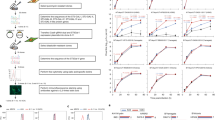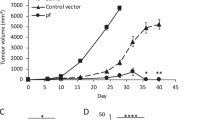Abstract
ONCOGENIC human adenoviruses are readily divisible into two chief subgroups: A (types 12, 18, 31), and B (types 3, 7, 14, 16, 21 and probably 11) based on similar biological and biophysical properties1,2. Recently, Freeman et al.3 showed that adenovirus type 2, representative of a third subgroup of human adenoviruses, morphologically transformed rat embryo cells. The viruses of this subgroup, types 1, 2, 5 and 6, are similar in many biologic properties; they produce a partial haemagglutination pattern with rat erythrocytes, the agglutination being enhanced by the presence of heterotypic antibody4. Adenovirus type 4 also partially agglutinates rat cells, but in other respects, such as T antigen reactivity5, DNA–DNA homology6 and homology with tumour cell mRNA7, seems related to the B oncogenic subgroup. The rat cells transformed with adenovirus 2 contain an antigen which reacted in both complement-fixation (CF) and immunofluorescent tests with sera from hamsters inoculated with tumour extracts and with cells transformed by adenovirus 1- and 2-SV40 hybrid viruses3,8. These results suggested, as shown here, that other members of the adenovirus 1, 2, 5 and 6 subgroup would transform rat cells and that a common T antigen could be demonstrated. Evidence obtained by the fluorescent antibody method for a shared T antigen for adenoviruses 1 and 2 has already been reported8.
This is a preview of subscription content, access via your institution
Access options
Subscribe to this journal
Receive 51 print issues and online access
$199.00 per year
only $3.90 per issue
Buy this article
- Purchase on Springer Link
- Instant access to full article PDF
Prices may be subject to local taxes which are calculated during checkout
Similar content being viewed by others
References
Huebner, E. J., Perspectives in Virology (edit. by Pollard, M.), 5, 147 (New York, Academic Press, Inc., 1967).
Pina, M., and Green, M., Proc. US Nat. Acad. Sci., 54, 547 (1965).
Freeman, A. E., Black, P. H., Vanderpool, E. A., Henry, P. H., Austin, J. B., and Huebner, R. J., Proc. US Nat. Acad. Sci., 58, 1205 (1967).
Rosen, L., Amer. J. Hyg., 71, 120 (1960).
Huebner, R. J., Casey, M. J., Chanock, R. M., and Schell, K., Proc. US Nat. Acad. Sci., 54, 381 (1965).
Lacy, S., and Green, M., Science, 150, 1296 (1965).
Fujinaga, K., and Green, M., Proc. US Nat. Acad. Sci., 57, 806 (1967).
Black, P. H., Lewis, jun., A. M., Blacklow, N. R., Austin, J. B., and Rowe, W. P., Proc. US Nat. Acad. Sci., 57, 1324 (1967).
Freeman, A. E., Black, P. H., Wolford, R., and Huebner, R. J., Virology, 1, 362 (1967).
Gilden, R. V., Beddow, T. G., and Huebner, R. J., Applied Microbiol., 15, 657 (1967).
Green, M., Report to the National Institute of Allergy and Infectious Diseases, contract No. PH43-64-928 (Sept. 1967).
Gilden, R. V., Kern, J., Lee, Y. K., and Huebner, R. J., Proc. Soc. Exp. Biol. and Med., 127, 191 (1968).
Levy, J. A., Huebner, R. J., Kern, J., and Gilden, R. V., Nature, 217, 744 (1968).
Author information
Authors and Affiliations
Rights and permissions
About this article
Cite this article
GILDEN, R., KERN, J., FREEMAN, A. et al. T and Tumour Antigens of Adenovirus Group C-infected and Transformed Cells. Nature 219, 517–518 (1968). https://doi.org/10.1038/219517a0
Received:
Revised:
Issue Date:
DOI: https://doi.org/10.1038/219517a0
This article is cited by
Comments
By submitting a comment you agree to abide by our Terms and Community Guidelines. If you find something abusive or that does not comply with our terms or guidelines please flag it as inappropriate.



